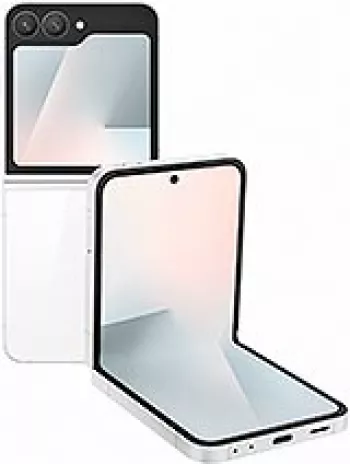
Overview of Samsung Galaxy Note N7000
The Samsung Galaxy Note N7000, released in October 2011, was a groundbreaking device that bridged the gap between smartphones and tablets, coining the term "phablet." The device offered a unique combination of a large display, advanced hardware features, and software capabilities that made it a versatile tool for both productivity and entertainment.
Design and Build
The Galaxy Note N7000 boasted a sleek design with dimensions of 146.9 x 83 x 9.7 mm, making it notably larger than typical smartphones of its time. Its weight of 178 grams ensured a solid feel in the hand. The device featured a glass front with Corning Gorilla Glass protection, a plastic back, and a plastic frame, striking a balance between aesthetics and durability.
Display
One of the standout features of the Galaxy Note N7000 was its 5.3-inch Super AMOLED display, which provided vibrant colors and deep blacks. With a resolution of 800 x 1280 pixels and a pixel density of approximately 285 ppi, the screen offered sharp and clear visuals. This made it ideal for media consumption, gaming, and productivity tasks.
Performance
Under the hood, the device was powered by the Exynos 4210 Dual chipset, a dual-core 1.4 GHz Cortex-A9 CPU, and Mali-400 GPU. This combination ensured smooth performance for day-to-day tasks and moderate multitasking. The device originally came with Android 2.3.5 Gingerbread, upgradable to Android 4.1.2 Jelly Bean, with the TouchWiz UI 4 interface providing additional features and customization options.
Memory and Storage
The Galaxy Note N7000 offered two variants in terms of internal storage: 16GB and 32GB, both supported by 1GB of RAM. For those requiring additional space, the device included a microSDXC card slot, allowing users to expand their storage capacity by up to 64GB, making it suitable for storing extensive media libraries and applications.
Camera Features
The imaging capabilities of the Galaxy Note were significant for its time. It featured an 8 MP main camera with an f/2.6 aperture and autofocus. The camera was equipped with an LED flash for capturing images in low-light conditions and could record full HD video at 1080p at 30fps. The 2 MP front camera was suitable for video calls and basic selfie tasks.
Connectivity
The Galaxy Note N7000 supported a range of connectivity options to ensure excellent communication and data transfer capabilities. This included GSM, HSPA, and optional LTE, alongside Wi-Fi 802.11 a/b/g/n with dual-band, Wi-Fi Direct, DLNA, and hotspot support. Additionally, the device offered Bluetooth 3.0, GPS with A-GPS support, GLONASS, and NFC (optional), catering to the needs of modern users.
Battery Life
The device housed a removable Li-Ion 2500 mAh battery, providing a practical solution for users who preferred swapping batteries over using a charger. It promised a standby time of up to 960 hours on 2G and up to 820 hours on 3G networks. With a talk time of up to 26 hours and 10 minutes on 2G and up to 13 hours and 30 minutes on 3G, it effectively catered to heavy-duty usage.
Sound and Multimedia
The multimedia capabilities were enhanced with a solid audio system; it featured a loudspeaker for speakerphone calls and media playback and maintained the 3.5mm audio jack for traditional headphone use. The audio quality was reliably competent, with low noise and minimal distortion, ensuring a pleasant listening experience.
Market Impact and Legacy
Upon its release, the Galaxy Note N7000 created a new niche in the smartphone market. Its introduction of the S Pen stylus, which provided additional productivity capabilities, notably set it apart. Samsung's entry paved the way for future "Note" series devices and influenced other manufacturers to explore larger screen sizes and pen input.
Final Thoughts
The Samsung Galaxy Note N7000 was a pivotal device in the evolution of mobile technology. Its blend of advanced hardware and innovative features offered consumers a new way to interact with their smartphones. While it has since been discontinued, its impact remains evident in today’s smartphone designs and continues to influence the development of mobile devices.
Key Features of Samsung Galaxy Note N7000
- Supports GSM, HSPA, and LTE network technologies
- Protected by Corning Gorilla Glass for durability
- Large 5.3-inch Super AMOLED display
- Expandable storage with microSDXC card slot
- 8 MP main camera capable of 1080p video recording
- Comes with a 2 MP front-facing camera for selfies
- Equipped with a removable 2500 mAh battery providing long talk time
- Runs on Android OS, upgradable to version 4.1.2 Jelly Bean
- Features Wi-Fi, Bluetooth, GPS with A-GPS and GLONASS, and optional NFC
- Includes sensors such as accelerometer, gyro, proximity, compass, and barometer
- Available in multiple colors: Black, White, and Pink
Samsung Galaxy Note N7000 Drawbacks
- The device is discontinued, meaning limited support and updates.
- Bigger body dimensions can make it cumbersome for one-handed use.
- Uses Mini-SIM card, which is outdated compared to nano-SIM standards.
- The screen-to-body ratio (~66.8%) is relatively low by today's standards.
- The operating system is initially Android 2.3.5, which is outdated and may not support modern apps efficiently.
- Limited chipset (Exynos 4210 Dual) and dual-core 1.4 GHz CPU may lead to slower performance for modern tasks.
- Only 1GB of RAM can hinder multitasking and performance in recent applications.
- The Bluetooth version 3.0 is older, lacking improvements found in later versions for better connectivity.
- Battery performance (endurance rating of 39 hours) may not suffice for heavy use throughout a day without recharging.
- Loud speaker outputs (Voice 64dB / Noise 64dB / Ring 72dB) could be weaker for environments with high ambient noise.







































View Also
More Phones
All Rights Reserved +14266 Phones © Mobilawy 2025

























